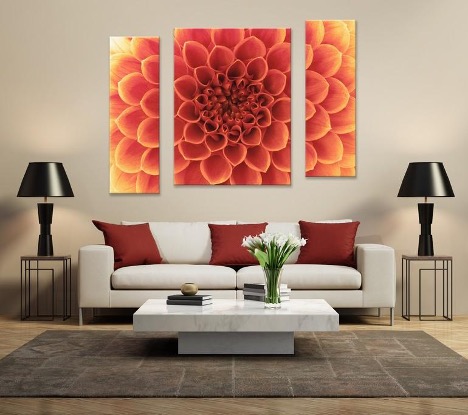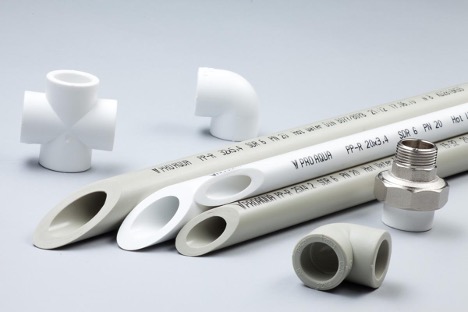A painting of several parts on the wall: what is it called, what does it look like
If we talk about the name of a painting made from several parts, then it is a modular or sectional painting. This is one of the popular means of designing premises for any purpose - bedroom, hall, living room, children's and others. The types of such images and the rules for their selection are described in detail in the presented material.
The content of the article
Features and types of paintings
Wall paintings made of several parts, photos of which are presented in the article, are called modular or sectional. The idea is quite simple - one image is divided into several fragments and hung next to each other. And this can be done in different ways:
- horizontally along one line;
- horizontally in the form of a ladder;
- vertical;
- square (in the form of a puzzle);
- asymmetrically.
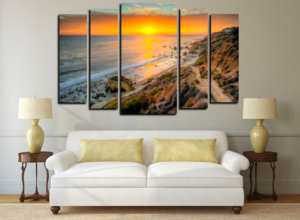
Depending on the number of modules, the picture is called:
- diptych – 2 elements;
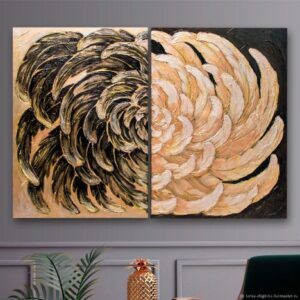
- triptych – 3 elements;
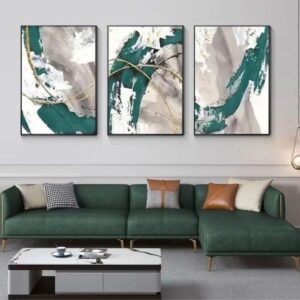
- quadriptych – 4 elements.

If we talk about the name of the painting of 5 parts, then it is a polyptych. Compositions of 6 or more modules are called the same thing. They are not found very often and are used only in very large rooms with a large area of walls.
How to choose a modular painting
When choosing a suitable composition, you should focus on your taste, as well as practical points:
- dimensions of the wall, room;
- interior;
- number of modules.
Professional designers recommend considering several points:
- The painting should occupy no more than a third of the entire surface, the maximum permissible value is one second.
- There should be no other paintings or shelves on the surface (at least closer than 2 m) - otherwise the module will not look so attractive.
- Free space should be left on all sides of the fragments, since otherwise the picture will look “squeezed”, which is not entirely pleasant.
- The top edge is placed so that door or window openings are always above it.
- A small gap of 1.5-2 cm is left between the elements. Although there are also cases when fragments are hung further apart from each other. Here you need to focus on your own taste and the location of neighboring objects on the wall (if available).
How to arrange modules
As already mentioned, modules can be arranged in different ways, and this also affects the visual effect:
- Vertical compositions create the impression of a high ceiling height and visually increase the space.
- Horizontal paintings, which are most often used, “push” the wall wider, which is especially useful for narrow rooms.
- Arranging the fragments diagonally (in steps) is appropriate for decorating a staircase. Although the same technique can be used in rooms.

Another point is related to the height of the location. Here you need to proceed from the general rule - the central point of the picture should be at the gaze level of a person of average height. This means that the center is placed at a height of 165 cm from the floor surface.
On the other hand, people sit more often in the living room and bedroom than stand. Then the image should again be positioned at eye level. For example, if the picture is placed above the sofa, its lower edge should be located 12-15 cm above the back.
Thus, a modular composition is one image consisting of several fragments. In this regard, users sometimes ask the question what is the name of the painting within the painting. This is misanabim - a technique when one drawing is built into another. But strictly speaking, it has nothing to do with modular paintings. Modules are most often used to decorate different rooms - they look original and at the same time are affordable.




